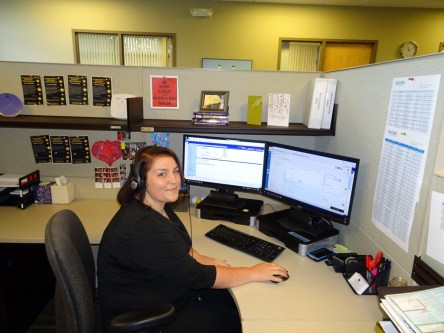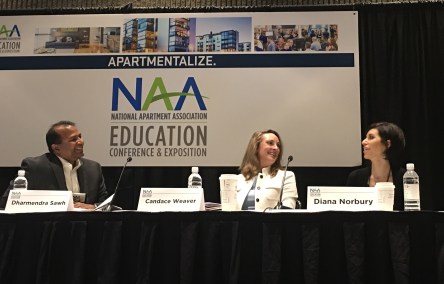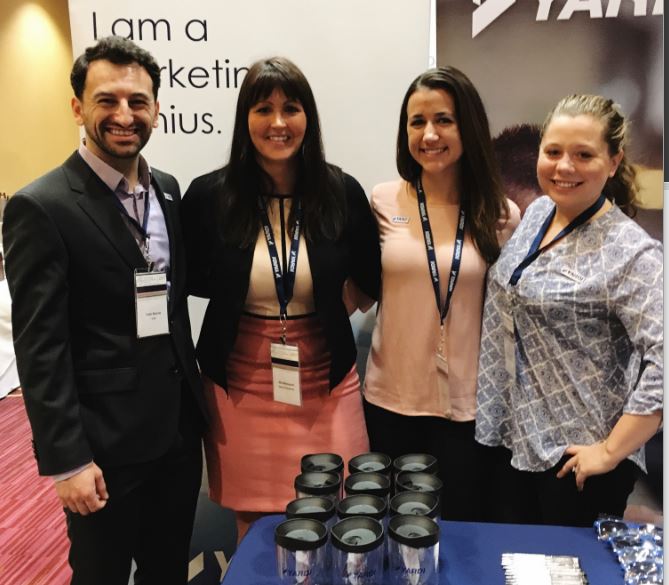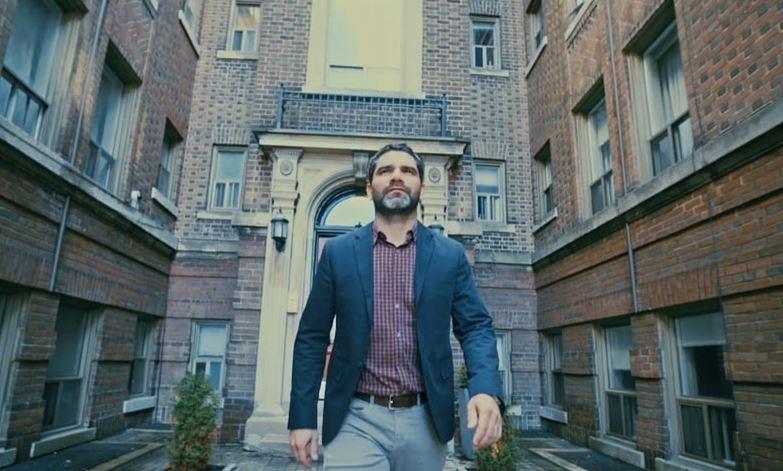The winter months signal a slow down throughout the multifamily industry. For marketers and site staff, however, the slow season is a great opportunity to get ahead for the spring. Below are 9 tips for a productive winter that will jumpstart your spring. Marketing Refresh Collaborate with sales and operations. The slow season is the perfect time for marketers to strategize with other departments. Assure that your spring goals have the budget to support them. Share insights that you’ve received from residents’ surveys, prospect feedback, and other sources that may influence changes at the properties. Now is the time to mention any needed site updates or value-add software for residents and staff. Maintain your online presence. All leases come to an end. When they do, you want to be on the forefront of prospects’ minds. Even if you dial back on spend, maintain a strong presence on your highest quality lead sources. Yardi RentCafe makes it easy to manage your marketing spend while optimizing your exposure. Get a head start on your spring campaigns. The early bird gets the worm, so don’t wait until the snow melts to plan your local campaigns. Use the quiet times in the office to brainstorm new ideas. Create a content calendar for the blog and social media. Impromptu posting is a great way to take advantage of relevant, timely material. Content calendars, however, ensure that you always have a plan for keeping your social media up-to-date. RENTCafé makes it easy to create and schedule posts to your blog and social media platforms. Resident Retention Build loyalty with residents. With fewer prospects consuming your time, take this opportunity to pamper your existing residents and build loyalty. Issue resident surveys to understand what residents love about your property—and what can...
CSR, Part Two
Multifamily Does Good
Part two of a two-part feature. Read the first article. In 2014, real estate technology provider Yardi established The Yardi Foundation, which supports nonprofit organizations that are located near the company’s offices around the world. Yardi opted for a two-tier CSR model, dividing a seven-figure donation between them: one tier supports several small-scale projects. Yardi designates a sum for every office of more than 50 employees. The grants are allotted to local organizations that are nominated by employees and approved by peer committees. The second tier takes on an international challenge. Yardi launched Yardi Vasti Vikas Prakalp (YVVP) in Pune, India in 2006. It is one of Yardi’s largest CSR programs to date, providing financial support to 17 local non-governmental organizations (NGOs) and community-based organizations (CBOs). All partnering entities serve some of India’s most disadvantaged neighborhoods. Gordon Morrell, Executive Vice President, Yardi, works closely with The Yardi Foundation. “Our work there is focused within the urban poor communities that are just a short distance from the office. These projects include cleaning shared toilet blocks to improve sanitation, working in local schools and preschools, providing vocational training for young people, and funding a mobile medical unit specifically for women’s health issues. Some of the work is conducted by NGOs; in addition, Yardi has hired social workers to provide direct services in many of the areas,” Morrell said. Yardi uses multiple measures of success including impact surveys and reports directly from the NGOs and CBOs. As of 2016, YVVP provided health care services for 120,000 women and children; 500 sanitation units for poor urban communities; and career services for 1,480 teens and young adults. “We got involved in CSR because we simply wanted to give back to the communities that have supported our business and our...
Procurement Payoff
Saving Time + Money
Cutting costs never loses appeal, even in a robust industry and a thriving economy. Inescapable expenses such as insurance and taxes, along with competitive pressures, have forced property owners to become increasingly creative in finding opportunities to cut costs and work more efficiently. Processing payments for the various products and services that keep properties running smoothly is one of those inevitable expenses. This historically has been a manually intensive and paper-heavy process. Routing one paper vendor invoice through payment can take as long as 30 days and cost up to $35 dollars, according to data compiled by Yardi. With potentially thousands of invoices coming in every month, those costs add up fast for property owners and managers. A recent analysis examined 25 million invoices that about 1 million vendors submitted for processing by Yardi Procure to Pay on behalf of more than 1,000 real estate businesses. The study offered insight into ways that companies handling small and large volumes of invoices can streamline the process and reduce costs and staff burdens. The Yardi Procure to Pay study found that businesses submitting five or more invoices per month, which account for just 7% of vendors but 75% of invoices, often require accounts payable or property teams that spend significant amounts of time scanning, keying and verifying these large invoice volumes. Even vendors submitting a low volume of invoices—four or fewer per month—can spend an inordinate amount of time on invoices, often repeatedly calling client properties for status checks or sending duplicate invoices until they are paid. All this activity takes up significant time and effort from accounting departments and property-level staff. Streamlined Approvals Fortunately, the procure-to-pay process has become dramatically more efficient in terms of labor and expense in recent years. Many real estate...
Canadian Leasing
Ramp up with RentCafe
The 2017 Canadian Multi-Res Tenant Survey conducted by Informa Canada showed that 85% of renters take less than two months to find their rentals. Your marketing website and ILS listings through RentCafe are designed to help get their attention during that crucial time. But for a truly effective marketing approach that makes the maximum impact during those two months (and beyond), there are a couple more tools you can add to your toolkit. RENTCafé CRM and RentCafe Connect are two solutions that integrate with RentCafe and Yardi Voyager to better manage prospect, applicant and resident workflows. RentCafe CRM simplifies leasing and resident services by putting everything leasing staff needs in one mobile interface, making it easier to follow up with leads and provide expert service from anywhere. RentCafe Connect is a budget-friendly contact center solution that supports your team with automated call answering and on-demand live support – so prospects and residents get the service they need 24/7. Using these tools in conjunction with RentCafe helps property managers improve onsite efficiency while managing the prospect to resident lifecycle, as well as improve spend and retention. Take a closer look at the four benefits of integrating your marketing strategy using the tools in the Yardi Marketing Suite. Simplify Operations Connecting these three solutions automates the entire leasing process, increasing visibility for you and your staff. When online leads and applications come through RentCafe, your prospects’ data instantly appears in RENTCafé CRM – no duplicate manual entry required. Follow-ups are automatically scheduled based on your custom criteria, giving your staff a clear picture of what needs to happen next to convert each lead into a lease. There are follow-ups for residents too that help automate the move-in, move-out and lease renewal process, making this a true...
Renters Speak Out
Canadian Tenant Survey
If you’re currently a renter or have ever been one, you’ve probably wondered whether or not your landlord considers your needs for a happier home. A recent survey of thousands of Canadian renters sent a clear message to property managers everywhere: from soundproof walls to high speed internet and online services, renters are expecting more from their apartment living experience. And perhaps not surprisingly, technology tops the list. Sponsored by Yardi, results of this year’s Tenants Preference Survey, the only survey of its kind for the Canadian market, were presented at the Canadian Apartment Investment Conference (CAIC) on September 6, 2017. The CAIC brings together property owners, managers, investors and developers to provide valuable insights into the residential real estate market including how to increase net values. This year, attendees were eager to hear about what renters really want and how to keep them happy. Birth of the Project According to Sarah Segal, director at Informa, the survey was inspired five years ago by a real estate roundtable discussion that raised questions about what renters wanted. Informa delivers over 150 trade and consumer exhibitions annually across the globe including the Canadian Apartment Investment Conference, and engages industry leaders to understand key trends and concerns impacting property owners and managers. With more digital tools to empower its research in 2016, Informa partnered with Rentlogic and worked with founder Yale Fox and Amy Erixon from Avison Young to conduct a small survey of 2,000 renters. Segal said the survey produced some interesting findings, but Informa wanted wider distribution and more targeted questions for the next survey. To accomplish that, the company sought industry support including sponsors and the participation of property managers. Segal commented, “Yardi was immediately onboard with helping us produce an in-depth renter survey and...
Multifamily Outlook
Smooth and Steady
Yardi Matrix reports another strong summer for the multifamily real estate sector. The fundamentals were downgraded from “great” to “consistently good” but several factors suggest continued, healthy performance. Even rapid development in some of the nation’s hottest markets has slowed to a more sustainable pace due to construction labor shortages. The shortages may have longer-lasting effects due to disaster recovery efforts throughout the United States. Rents For the last year-and-a-half, rent growth as gently declined as rents inched upward. The rent growth deceleration may be drawing to an end, though, as the supply boom reaches it apex. National average rents increased by 2.4% on a year-over-year basis in August, yet are down from 4.6% at this time last year. Deliveries are not manifesting as quickly as previously anticipated, which should moderate rent increases. The long-term outlook for multifamily seems promising due to favorable fundamentals and demographic trends: Millennials are forming households, wage growth remains solid, and the economy is relatively healthy. Hottest Markets The hottest metros for rent growth are still secondary markets that are lagging on supply. Tacoma (8.1 percent), Sacramento (7.7 percent), Colorado Springs (7.6 percent) and the Inland Empire (4.3 percent) are four of the fastest growing markets yet they’re only estimated to increase stock by 1 percent this year. These markets benefit from their proximity to larger markets such as Seattle, the Bay Area, Denver and Southern California. They enjoy vigorous employment growth and popularity with Millennials. The young renters look forward to the areas’ desirable lifestyles with lower costs. There are always exceptions. Seattle faced 5.9 percent rent growth regardless of the surge in supply. Analysts are exploring the connection between rents and the city’s increased minimum wage. Minimum wage increased from $9.47 in 2015 to $13. Nashville is...
Apartment Idol
Magellan Welcomes Artists in Residence
For musicians Jay Filson of Nasvhille and Jeremy Gentry of Chicago, a year of free rent in a brand-new apartment building is a golden ticket while they work toward establishing fledgling music careers. And for Chicago-based Magellan Development Group, a Yardi client, hosting the two musicians as “Artists in Residence” at its new properties is an amenity so unique that it has garnered significant press attention. Filson and Gentry are the inaugural winners of a creative lease-up competition held by Magellan as it marketed The Sobro in Nashville, and Exhibit on Superior in Chicago. The goal was to find Artists in Residence who would perform at the communities and provide music lessons to residents in exchange for a year of free rent. The Contest Each Artist in Residence winner competed against dozens of other musicians who submitted videos about why they were the most deserving and talented applicants. A live final performance, a la American Idol, concluded the competition. “Our Magellan principals envision this musician/artist in residence as teaching, playing, connecting with our residents in a variety of ways. They believe that music brings people together,” said Sherri Cuda, Director of Leasing for Magellan. Both Filson and Gentry are newly out of college and each was struggling to figure out what next steps their pursuit of a music career would take when they heard about the “Sobro Star” and “Exhibit A-Lister” competitions. Gentry, who works at one of Chicago’s dueling piano bars in the evenings, was thinking of moving back in with his parents. Filson had been working in marketing but knew that music was really the passion he wanted to pursue. “This is the kind of opportunity that does not come up, ever,” Gentry said. “I’m hoping that before next year I can make some original music. That’s my goal, to release an EP or a short album of original music before my time is done here.” Filson has a similar plan. He was working at his alma mater, Indian Wesleyan University, when the opportunity to compete for free rent in “Music City USA” came his way. “I tried not to get my hopes up too high but it just seemed like such a perfect opportunity,” he said. “And then it worked out, so I packed up all my stuff and moved to Nashville.” Since arriving, he’s been working on establishing a broad base of contacts and exploring the local music scene. “People here really do care about music in a really exceptional way. So it’s fun to be able to play for people and residents here that really love music and are open to hearing new artists,” Filson said. Benefits all Residents As part of the terms of the contest, each Artist in Residence puts in 30 hours a month of musical contributions toward their community. “We get a great deal out of it, but the residents get in house entertainment on a regular basis,” said Filson, who often mixes his own original work with mash-ups from popular artists like Eminem. “I’ve been playing by the pool, playing any events we have, and playing events at other Magellan buildings,” said Gentry, who is trained as a pianist but also plays guitar and drums. To augment his preparation for work at the piano bar, Gentry asks his neighbors for their song requests when he plays at the pool. He also has a list of residents who are interested in lessons and plan to start teaching soon. Expanding Possibilities Cuda says that Magellan plans to continue to roll out the contest in other future lease-ups, with the option to expand the scope. The talent portion of the event garnered significant publicity and attention in both markets. Local public relations agencies helped market it via social media and local news outlets. “In future projects, we intend to tailor the program. We may include culinary, wellness, fitness, or other areas. We...
Case Study
RentCafe Reach + Westdale
A case study reveals the rewarding results of a Yardi-led search engine optimization (SEO) and search engine marketing (SEM) campaign for Westdale, a national real estate investment and property management company. Using RentCafe Reach, Yardi tested, analyzed and optimized mobile ad campaigns for Westdale to produce fast results. These included a 160% increase in leads, 81% of which came from mobile devices like tablets and phones! About Westdale Westdale is headquartered in Dallas with six regional offices through the country. It focuses on acquiring, managing and developing investment opportunities and oversees approximately 200 properties in more than 30 cities. Westdale’s goal during the campaign was to work with Yardi to differentiate its communities from the competition and reach more potential renters. Process The case study focused on a RentCafe Reach campaign targeting rental leads. For Westdale’s campaign in a competitive Class A apartment rental market, Yardi researched, planned and executed SEO and SEM strategies to improve lead generation from organic and paid search results. Yardi is a certified Google AdWords partner, and RentCafe Reach campaign management is executed by Google AdWords Certified Specialists. This campaign used expanded text ads and other Google AdWords products. Conversion tracking throughout the campaign was used to support data driven marketing decisions. Results & Metrics The combination of SEO and SEM tactics created a large footprint in search results for Westdale, driving more qualified lead candidates. As a result, Westdale saw a significant improvement in the quality of both online and offline conversions at a lower cost. 160% increase in leads 66% increase in conversion rate 56% reduction in cost per lead Westdale’s Takeaways “When properties experience issues with low occupancy, combining SEO and AdWords brings immediate results,” said Jaymz Yates, director of technology at Westdale. “Yardi has fined...
Apartment Trends
RENTCAFE Construction Report
We’d need 4.6 million new apartments by 2030 to meet demand for rental living and keep prices in check, reports the National Multifamily Housing Council. That’s about 373K new units each year on average, a number that’s rather optimistic considering the pace of apartment construction in the last decade. So how feasible is this plan? A recent study from RentCafe on the apartment market suggests the country’s growing renter population need not be too concerned. According to data from real estate data provider Yardi Matrix, apartment construction is at a 20-year high, with most of our country’s biggest cities seeing significant upgrades in rental stock. After a slow post-recession period, the market started rebounding in 2012 and by 2014 new supply had amounted to more than 237,000 units delivered in one year, well above historical averages. Between 1997 and 2006, annual completions averaged 212,740 units. In 2017, apartment completions are expected to top 345,000, a 21% increase compared to last year’s deliveries when more than 285,000 units saw the light of day. Hot Urban Markets See Rents Softening as Developers Ramp Up Apartment Construction After peaking in 2014 at 5.1%, monthly rent prices rose just 1.5% to $1,316 in May, the lowest annual growth rate we’ve seen in more than three years. In 2017, the average U.S. rent is expected to increase a modest 3.9%. Does this mean apartment prices are finally taking a break from rent growth? Apparently so, and thanks to intensified apartment construction, that’s even the case with some of the country’s historically tight (or rather outrageously expensive) markets. Close to 6,200 new units entered the San Francisco metro area in 2016, with approx. 5,400 apartments expected to be delivered this year and another 9,500 under construction. While demand is still strong...
Smart Growth
Dominium Uses Yardi eLearning
New hire onboarding is a necessary process for all growing multifamily organizations. It is also a major pain point. Dominium, a Minneapolis-based leading apartment development and management company, set goals to double in size by 2025. To reach its goals, the company needs an innovative and efficient training solution. Maya Kasangaki, Senior Service Desk Technician and Yardi Trainer, explains how Yardi eLearning has prepared her organization for growth. Onboarding Dilemmas Dominium faced challenges that are familiar to other property management firms: high turnover and costly, inefficient training processes. The organization hosted monthly weeklong trainings for new community managers at the corporate office. In addition to regular conference calls, these nearly six-hour training sessions consumed the majority of Kasangaki’s time. Once complete, she lacked a consistent way to track students’ understanding and content retention. “If we have training with 12 people on the call, it’s hard to make sure that everyone is absorbing the information. They aren’t as comfortable bringing up questions or starting a discussion in the midst of a training,” she observes. High turnover exacerbated the already frustrating situation. “Because of the staff turnover in property management, we would train someone but they didn’t have basic knowledge of the industry. The information we provided was maybe going over their head. Then we would hire someone to replace them and we would have to begin this process all over again,” says Kasangaki. Dominium sought a training solution that would simplify and expedite new hire onboarding. Online Solutions for Onboarding and Growth In 2016, Dominium implemented Yardi eLearning. The company customized the curricula to include soft skills courses, videos, webinars, and more. Kasangaki appreciates the ability to deliver content in different formats, allowing learners to receive the information in a way that appeals to their...
Western Focused
LocalConstruct Grows + Thrives
Casey Lynch and Mike Brown were graduate school classmates at UCLA when they started their real estate investment and development company, LocalConstruct, with limited funds and bona fide sweat equity. “We bought a $55,000 condominium in Fontana, Calif. that we painted and renovated ourselves. We were at Home Depot, buying our own supplies,” recalled Lynch. Flash forward nearly a decade, and LocalConstruct has become a thriving small firm with multifamily and mixed-use projects in California, Colorado, Idaho and Montana. The Los Angeles-based company, a Yardi client, has developed 2,000 apartment units to date. Lynch and Brown have a specific vision for urban infill development. Seeking out markets with plentiful jobs but limited work-proximate housing, they have hit a sweet spot where limited supply meets unprecedented demand. We talked with Lynch about LocalConstruct’s market choices and formula for success. You started your company in 2008, when real estate was in a desperate place. Why? Lynch: We saw a great opportunity to start an entrepreneurial enterprise, given the volatility in the market at the time. We raised a small fund to go out and buy single family homes and convert them into real properties in Los Angeles. You always hear developers who have been in the business 30 to 40 years talk about their first deal and working their way up the ladder. For us and our story, that would be true. Things have changed tremendously since then. What happened to LocalConstruct in the last nine years? Lynch: We went from one unit projects to 2 to 4 to 8 to 20 to 100 to 300. We have a presence in four states in the West and we are focused on infill housing strategies, primarily rental housing, and we are focused on emerging markets...
Facebook Live
5 Tips to Rock Live Video
Video continues to rise to the top of the digital marketing playbook. If you’re skeptical about the power of video, consider that almost 50% of internet users look for videos related to a product or service before visiting a store. And four times as many customers would rather watch a video about a product than read about it. Video content can also improve SEO, increase engagement and boost brand loyalty and awareness. Within the realm of real estate, the industry – from retail to residential to student housing – is finding creative ways to leverage video. What’s clear is video isn’t going anywhere, so it’s time to jump in feet first. Facebook Live offers an interactive, free and highly visible way to engage with an audience. The platform now sees 8 billion average daily video views from 500 million users. With help from social media experts, in-depth tutorials and best practice tips, even the most novice user can become a Facebook Live pro. Here are five tips to rock Facebook Live: Step 1: Ask permission If you plan to live stream other people, ask for permission before you record them. Keep in mind some conferences and venues may have strict no streaming policies. When in doubt, ask. Step 2: Game plan Some questions to inform your live video strategy: Why do you want to do live video? Who are you hoping to reach? What do you want this audience to do? What will you talk about? How long will you go live for? Facebook recommends 10 to 90 minutes, but even 5 minutes is great. Do what feels right for your organization and your viewers. Where will you go live from? Walk the room and consider reserving a spot in front. Minimal background...
Optimizing Data
Maximizing Revenue Part 2
Yesterday, we laid the foundations of a strong online presence. We now continue with how to gather insights from analytics to inform marketing and retention decisions. Micro-Adjustments Lead to Success When vacancy rates inch upward, resist the urge to slash prices. “Price should be the last negotiable item, not the first,” advises Sawh. Examine your SEM data, which will show leads generated and which keywords drive conversions. Use that information to adjust pay-per-click ads, the easiest marketing factor to manipulate. In a case study, Bell needed to fill several 2-bedroom units. Data revealed that people who visited the website’s Pets page were most likely to reach goal completion. The team marketed 2-bedroom units to pet lovers to successfully fill the units. You can also make adjustments based on prospects’ objections to visits and objections to leasing. Leverage Soft Data “Business intelligence tools can give you a purview in but it doesn’t tell you the story. Customer insight is the soft data, the human touch,” says Weaver. SEO and SEM generate traffic but once traffic is translated into website and site visits, ORM and customer relationship management (CRM) capture data about visitors. Both give insights into why visitors chose to lease (or not) with your property. Use data gleaned from ORM to tweak the resident and prospect experience. If several reviews indicate that the marketing doesn’t match the product, for example, it’s time to update your gallery and re-examine your marketing message. With prospects, poor follow-through lets many conversions slip away. “It will take eight times of someone telling you no before they say yes,” explains Norbury. “Three points of contact aren’t enough.” “What we tend to forget is that we paid, maybe $20, for the phone to ring. If we don’t answer or don’t...
Maximize Revenue
Use Data Better
The National Apartment Association (NAA) recently hosted the 2017 Education Conference in Atlanta. Marketing Maneuvers: Data in the Driver’s Seat explores how data can inform marketing decision and maximize revenue. Panelists included Candace Weaver, Director of Marketing, Bell Partners; Diana Norbury, Vice President, Multifamily Operations, Pillar Properties; and moderator Dharmendra Sawh, Industry Principal, Revenue Management and Business Intelligence Sales at Yardi. The trio reinforces the importance of operations, revenue management, and marketing working together to reach goals. Below are three takeaways from the session: Understand the “Magic Mix” Before you can gather data, four key components must be in place to generate web-based data sets: SEO– search engine optimization is how your site is written to interact well with search engines. If you don’t have this solid foundation, you’ll have to work harder and spend more on SEM. Quality SEO contributes to higher organic rankings. SEM– search engine marketing includes paid search features. It is second best to organic rankings. “In one of our properties, there were an average 497 organic views but an average 690 views with paid search. Paid search will boost you but you can’t do SEM well without SEO,” explains Weaver. SEM comes with unique benefits as well. In one Bell case study, only 23 percent of leads came from SEM yet those leads made up 43 percent of total conversions. ORM -online reputation management entails how your brand is perceived online. This includes but is not limited to reviews and comments on your site and third party sites. Both Norbury and Weaver recommend having designated reputation management teams. “Of the 2 percent of people that click ‘Reviews’ on our property website, they have a 46 percent chance of converting,” says Weaver. SMO- social media optimization may overlap with ORM...
Fair Housing
Updates from NAA
This week’s NAA Education Conference & Exposition kicked off with a special session on Fair Housing, The New Five: Fair Housing Issues You Didn’t Know About. Panelists Doug Chasick, President, The Fair Housing Institute; Theresa Kitay, Attorney, Law Firm of Theresa L. Kitay; and Kathelene Williams, Partner, Williams & Edelstein, P.C. led the discussion. The team compiled a list of five hot topics in Fair Housing that can be confusing due to recent changes and ambiguities. The forum discussed best practices to help housing professionals avoid liability. Chasick opened with a piece of general advice before diving in: let common sense comes to the rescue when gray areas arise. “Take off your Fair Housing hat and put on your ‘Do I want to be the next slide in their presentation’ hat,” he laughs. “We can’t forget the, ‘Be a decent person’ hat,” adds Kitay. Below are the panelists’ recommended best practices: Occupancy Policies – Many properties rely on a two occupants per bedroom standard. The panel suggests reconsidering that standard, as it can lead to disparate impact claims from families with children. Consider two people per bedroom, plus one per unit as a base. Additional considerations might include items listed in the Keaton Memo, special circumstances such as the age of kids (e.g. exclude infants from occupancy rules), the size of rooms, and extra finished rooms like libraries or lofts that can safely serve as a sleeping quarters. When it comes to evictions or rejecting an application based on past troubles, victims of domestic violence may also require additional occupancy consideration. See statement HUD 16-159, issued Oct 24, 2016 for additional details. Immigration Status vs. National Origin – Immigration status is not a protected category in Fair Housing in most states. National origin, however,...
Marketing Automation
Makes a Big Impact
Today’s renters expect to be able to find and interact with your company everywhere, all the time. But does that mean you’re suddenly able to hire more staff for around the clock support? Of course not. Marketing automation is your secret weapon in an increasingly busy digital marketplace. Marketing automation streamlines repetitive tasks, follows user behavior and delivers targeted content to get customers into your leasing pipeline and help you keep them as loyal residents once they’ve moved in. It drives efficiency for the marketer and leasing manager while creating a more personalized experience for the customer. Watch a quick video about marketing automation. We talked with Esther Bonardi, vice president of marketing here at Yardi, for her perspective on the evolution of property marketing technology. “Property marketers have to constantly innovate to keep pace with consumer trends and demands,” said Bonardi. “Marketing automation is one way even smaller marketing teams can do that and have a big impact without breaking the bank.” 3 Ways Marketing Automation Is Changing Property Marketing Larger Reach Marketing automation tools like ILS data syndication and social media bulk posting help property marketers reach a larger audience with less effort. Instead of manually entering details like vacancy information, pricing, policies and contact information repeatedly – increasing the likelihood of human error each time – internet listings can be automatically and accurately updated across multiple sites with information from your property management software. Social media posts can be created just once and then scheduled and shared across popular platforms like Facebook and Twitter. Reach thousands of viewers each week without sucking time out of every work day. Better Service Bonardi points out that marketing automation isn’t just a way to work faster, it’s a way to market more effectively. “Marketing...
eLearning Video
Featuring Roscoe Properties
The power of online learning for real estate companies is highlighted in a new video featuring Yardi client Roscoe Properties. A multifamily firm in Austin, Texas, Roscoe has drastically reduced staff training time using Yardi’s customizable online learning platform. Mariana Estrada, Vice President of Operations at Roscoe Properties, shares in the video how the multifamily organization has been able to grow with help from Yardi eLearning. Critical trainings at Roscoe Properties would previously take up to four weeks. After implementing Yardi eLearning, staff was able to reduce critical training duration to three days. “eLearning has allowed us to take our training to the next level,” says Estrada. “It has provided us with a scalable training strategy that will take us to the next 10,000 units.” Yardi eLearning facilitates customizable online training that appeals to different learning styles. Students can access courses anywhere there is an Internet connection and review content as needed. Assessment tools empower course moderators to identify students who may need additional support. The results are flexible, effective trainings that save time and resources. “Just in travel alone, we’ve been able to save tens of thousands of dollars,” Estrada says. Roscoe Properties learns on Yardi....
Big Time
Save Hours Monthly
We could all use just a little more time to get everything checked off our to-do lists. If you’re a property manager at any size property, you and your team have a seemingly endless list of daily tasks, from interacting with new prospects to taking resident payments. Fortunately, modern technology is evolving to help speed things up at work. Advances in online services mean many processes that once had to be done by hand can now be automated. Recently, a few clients have shared quantifiable time savings they’re seeing at their businesses as a result of implementing better property management software. Take a look to see where you could be saving hours every month. Online Applications: 15+ minutes per application How much time do onsite teams spend entering application data? Mallory Monsma, marketing leader at NALS, estimates that online applications save its leasing agents 15 minutes each. In August of 2016, the team processed 347 applications, resulting in a time savings of 87 hours. If you’re using esignatures and completing the leasing process entirely online, your time savings will be even greater. Not to mention all the savings you’ll accrue surrounding printing, mailing, paper costs and physical storage. Online Payments: 4+ minutes per payment Monsma says that automated payment processing saves at least two minutes per check and a 20-minute roundtrip to the bank for every 10 checks. These numbers might seem small, but they quickly add up across a portfolio. In a month with 11,000 online payments, the NALS team saved 44,000 minutes (733 hours). Getting onboard with online payments also adds convenience for renters and speeds up cash flow. Roscoe Properties collects 95% of its rent electronically, quickly and on time. Mariana Estrada, vice president of operations, enthused, “That’s massive! That’s money...
Insights From AIM
3 Key Takeaways
Multifamily marketers from across the country converged in Huntington Beach for the 2017 Apartment Internet Marketing (AIM) Conference on May 7-10. Several hundred professionals gathered to explore the industry’s latest marketing trends and best practices. Here are three ideas from this year’s event that might buoy your marketing efforts: Tell Your Story Marketing is not just an exercise in generating the lowest cost per lead. It’s a complex combination of creativity and strategy that ultimately tells a story to potential customers. In a world of constant digital distraction, today’s marketers need to have the skills to create content that will rise above the noise. When it comes to creating engaging content, authentic storytelling and video rule. AIM panelists Jamie Matusek, President of Catalyst, Lori Valenti Webb, Director of Marketing at Wood Residential Services, and Anna Geary, Founder of Show My Property TV, explored the ideal customer experience. Matusek explained that experiences progress through the Happiness Halo framework, from anticipation to interaction to afterglow. Anticipation is the process of building excitement, teasing potential customers into wanting to know more. This can be seen in pre-event promotion and behind-the-scenes videos. Interaction immerses customers in an experience, providing emotional direction to aid in decision making. Multifamily application could be a time-constrained promotion, such as a rent discount, or highlighting property perks, such as free recreation classes or dog-friendly happy hours. Afterglow focuses on creating a positive memory, reinforcing brand positivity. As Matusek explained, bad things will happen, such as a poorly executed maintenance request or a negative front office visit, so it’s important to positively direct the sentiments with each resident touch point. Crafting an effective story can combine these three concepts into any medium, from a blog or social media post to a video. At AIM, video was...
Luxer One
Package Acceptance Made Easy
Throughout multifamily housing, managers struggle with resident package logistics. The problem spikes in student housing communities. Student properties receive 10-15 percent more packages than conventional multi-family properties. A Growing Problem The convenience of (often free) delivery appeals to busy students. Additionally, companies like Amazon target the student population with incentives. Amazon Prime offers six months of free service and 50 percent off of students’ subscription rate for the remainder of their student status. As a result, student housing staff gets swamped with packages. Leasing office staff juggle a myriad of responsibilities. Pausing potential sales or residents interactions to handle package delivery is not a viable option. Maneuvering guests around recently delivered armoires and mattresses is even less of an option. “We’ve seen communities spend up to 4 hours a day simply dealing with packages,” says Melody Akhtari, Director of Marketing & Communications at Luxer One. “Package delivery causes not only a problem of constant interruptions and wasted time, but it also causes space management issues.” Simple Solutions Luxer One provides storage solutions to address the growing needs of student housing managers. Luxer One’s storage solutions are designed to accept every package automatically and store them securely, without the need for management staff to intervene. This type of automation eliminates interruptions from parcel carriers and gives back time and energy to dedicate to the art of community management. Luxer Lockers are installed on the premises. The courier delivers the package to the locker and scans it. Residents get a mobile notification with a one-time-use access to retrieve their package on their own schedule. Leasing office staff can continue their workflows and other resident interactions without interruption. Locker sizes vary, permitting the storage of a range of packages. “Almost half of all packages delivered go into our small...
9 Responsiveness Tips...
Communication Best Practices
Want to get in touch with your residents? SatisFacts 2017 Online Renter study reveals that 88 percent of respondents prefer to be contacted via email; 73 percent ask to be contacted by cell phone, and 50 percent request text communication. Each method of communication has its own best practices. Dive into these nine tips for effective responsiveness. EMAIL Email is old news but effective email techniques constantly change. You must find a way to make your emails stand out in inboxes that are flooded with spam and competitors. These tips may keep your emails from the trash folder: 1. HubSpot reports that 33 percent of email recipients decide whether or not to open an email based on the subject alone. Subject lines matter! Since 40 percent of emails are read via mobile device, keep your subject 30-50 characters max. Make the subject interactive by leading with a verb. “Party with us tomorrow night!” is more enticing than, “There is a party tomorrow night!” If you have an incentive, notify the reader in the subject line, such as “Get 10% off rent next month.” Add emojis at your own risk. Research tells us that readers dread all caps and excessive punctuation. More than 85 percent of respondents prefer an all-lowercase subject line to one in all caps. But emojis are a relatively new terrain. When used sparingly, they can make a good headline stand out. Downside: they might not translate well across devices and carriers. Also, certain demographics (and not others) appreciate emoji use. Lastly, integrate numbers when you can. Numbers stand out among text and they provide context. “2 weeks until your lease renewal” will have a higher click-through rate than “renew your lease soon.” 2. Timing matters. Consider the subject of your email...
Snap Happy
Property Marketing Goes Guerrilla
OMG’s, LOLZ’s, puppy-dog faces and flower crowns. Snapchat is sometimes reduced to these simple stereotypes and thought of as something to entertain the kids when the adults get tired of the noise at family dinners. But noise and chaos are staples of modern life, for company and consumer alike. And as the godfather of guerilla tactics, Sun Tzu, expounded upon millennia ago, “In the midst of chaos, there is also opportunity.” When fully leveraged, Snapchat can be used to cut through the chaotic noise, both at family gatherings and in today’s rental marketplaces, to turn potential opportunity into new prospects. Background All social media platforms once represented an unconventional and unrealized marketing space. This is no longer the case. Snapchat is one of the many recent social frontiers that qualifies as a guerilla marketing opportunity for brands. It’s a place where you can outmaneuver your competition through unconventional and creative means (without a huge budget), thereby gaining greater exposure and winning. Some continue to dismiss Snapchat as “just an app.” At one point, the doubters may have been correct, but as the scope of Snapchat’s business has expanded so has their reach. It’s now a social media platform that competes closely with the companies typically identified as giants in the space. Case Study So you want proof, eh? The intrepid property managers at Continental Realty Corporation (CRC) just so happen to be early Snapchat adopters, and they were kind enough to share the data of some recent campaigns with us. In October 2016, CRC ran two Snapchat filter campaigns for onsite events, one in the commercial space and one in the residential space. At the commercial property, CRC ran a custom filter for the “Jerry Adams Chili Cookoff.” The Snapchat filter campaign lasted for...
3 Big Trends
Multifamily Social Media Summit
Team Yardi was lucky enough to attend the 5th annual Multifamily Social Media Summit in Napa during the first week of February this year. This conference brings together a wide variety of speakers from within and without the real estate industry to talk about the impact of social media on marketing, leasing and more. We’re always happy to get out there and hear new trends and challenges being discussed – as well as meet with clients from social savvy companies like Pinnacle, Reside Living and Monarch Investment and Management Group. This year we left the summit with three big social trend takeaways: Live Video Is Happening If you’ve been waiting for live video to go away, raise your hand. (You can’t see me, but I’m holding mine up sheepishly.) You might be thinking, “But I don’t want to be on camera, and the quality is unprofessional. Who would want to watch it anyway?” Everyone, it turns out. Keynote speaker Joel Comm, an author and entrepreneur who has hundreds of thousands of social media followers, was the first to bring it up. “Live video is the most significant leap in social media since the iPhone,” he said. “You now have the power in your hand to go live and reach the world… and your communities. It will give you an unfair advantage over your competitors.” Multiple speakers urged property managers to use live video to get potential residents to know, like and trust their brands by providing useful information. Joel even thoughtfully provided a list of live video ideas specific to multifamily: Show an empty apartment Showcase a furnished apartment Meet the staff Explore the neighborhood Show building in progress Show new amenities Tour the fitness center or pool Broadcast an event Walk through...
Timbercreek Communities
Canada Client Video
When David Melo, president of Timbercreek Communities, joined the company, his first call was to Yardi. Melo knew that the company needed a stronger, savvier technology provider to manage its complex accounting needs, and also enable the company to add vital solutions for ancillary services. Yardi Voyager delivered the tools that Timbercreek needed to succeed. Watch the video: Beyond superior accounting and reporting capabilities, moving from manual to automated processes within Voyager has provided Timbercreek with cost control and greater end-to-end operational efficiency. As an early adopter of Yardi PAYscan in Canada, Timbercreek has quickly realized the benefits of automating accounts payable. “Moving from a manual process to one that is automated with a workflow not only increases accuracy and processing speed, but also improves cost control,” said Melo. He added that the PAYscan mobile app is a great tool for staff who travel frequently, as it allows them to approve invoices from airports or anywhere else they happen to be. Timbercreek is also rolling out RentCafe resident portal and Yardi Maintenance, including the mobile app, across its portfolio. They expect significant time savings and improved responsiveness thanks to seamless Voyager integration. Melo commented, “We were manually receiving emails from our website for maintenance requests, which required someone attending to the email inbox and forwarding the messages to the right people. Now residents can simply log in to the resident portal, enter their service request and start the workflow.” Consolidating operations portfolio-wide on the Voyager platform has also improved communication within the company. As part of its inherently collaborative culture, Timbercreek has found great success with appointing “Yardi Champions” across its business. Melo commented, “We’ve empowered a small group of Timbercreek employees to be Yardi Champions. These individuals lead the charge and take ownership of each solution piece of our Voyager platform. This is an exciting new approach, and we’re already seeing great results from our 400 onsite employees. Yardi has absolutely helped empower our...
Targeted Marketing
Means quality leads
If your digital marketing campaigns simply generate leads, they are underperforming. Create campaigns that attract the highest quality leads and provide insights into tenant habits with a single business intelligence tool. Yardi Orion® Business Intelligence (BI) is a mobile-ready platform with more than 200 built-in key performance indicators. The software offers flexible reports and dashboards. The data gathered by Orion BI provides insightful, configurable reports that can be used by multiple tiers of leadership. Marketers can use Orion BI to identify lead sources for the highest quality renters: demographics that can reduce occupancy, minimize delinquencies, and promote lease renewals in one swoop. Orion BI highlights the cost per lease, showing users how many marketing dollars went into each conversion. Of the leases signed, renter behavior is then tracked. The data reveals which marketing sources attracted the most renters who paid their rent on time and which renters renewed their leases. Let’s say that your property ran ads on RentCafe.com, Apartments.com, and Forrent.com for one year. You wanted to know which of those sites resulted in the lowest cost per lease and the highest renewal rate. You could configure the parameters of your report to show those data sets. Upon discovering that RentCafe.com offered the highest quality renters, your marketing team would concentrate its resources towards that site. Your organization nixed marketing dollars on lead sources that underperformed. Orion BI can even help to fill specific types of vacancies. If your property has issues filling its studio units, you can create a report that shows which lead sources attracted renters who signed studio leases. You can also avoid lead sources where most renters seek out larger spaces. For more information on how Orion BI informs marketing decisions, join a...

























